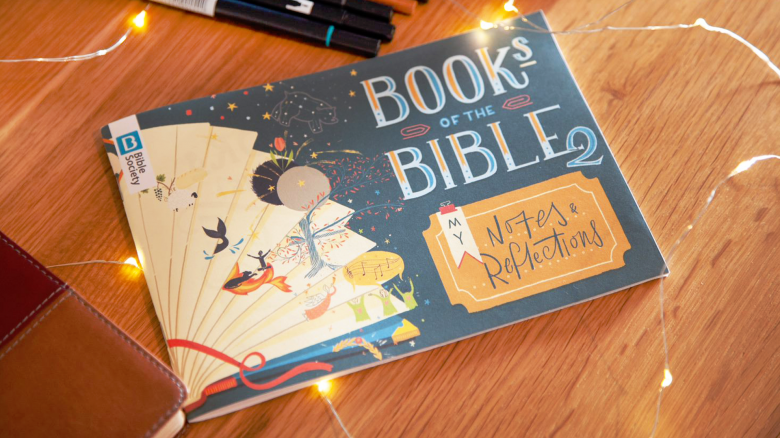What we call Paul’s second letter to the Corinthians was probably at least his fourth letter to them – references in 1 and 2 Corinthians point to letters written before the ones we now have in the New Testament. By the time Paul wrote 2 Corinthians it is clear that relationships between the Corinthians and Paul have deteriorated badly. He knows he has hurt them but it is clear he has also been hurt by them. As a result, 2 Corinthians reveals Paul's vulnerability more clearly than any other letter. In it Paul lays out his love for the Corinthians and his passion for the gospel, as well as his belief that vulnerabilities are the way in which Christ’s power is made complete and God’s glory shines into the world.
And all of us, with unveiled faces, seeing the glory of the Lord as though reflected in a mirror, are being transformed into the same image from one degree of glory to another; for this comes from the Lord, the Spirit. (2 Corinthians 3.18)
So if anyone is in Christ, there is a new creation: everything old has passed away; see, everything has become new! (2 Corinthians 5.17)
'My grace is sufficient for you, for power is made perfect in weakness.' (2 Corinthians 12.9)
A number of people don’t think this is one epistle but at least two, with the join between chapters 9 and 10. This is certainly one of the more disjointed of Paul’s letters. As you read it see what you think.
2 Corinthians 1.1 gives the authors of the book as Paul and Timothy.
Paul is probably the best known of all the early Christians. Before encountering Jesus Christ on the road to Damascus, he was a zealous Pharisee who sought to maintain the purity of Judaism. After his experience on the Damascus road, he turned his zeal to proclaiming Jesus Christ among the Gentiles. This brought him into conflict with some other early Christians, not least Peter, who thought that followers of Jesus Christ should convert to Judaism. He travelled around the Roman Empire, primarily in Asia Minor – modern-day Turkey – and Greece, proclaiming the good news of Jesus Christ and founding communities of Christians as he went. He also wrote a large number of letters, 13 of which are preserved in the New Testament. 2 Corinthians is one of these.
Timothy was born in Lystra in Asia Minor of a Jewish mother and Greek father. Acts 16.1–3 recounts his meeting with Paul in Lystra and Paul’s desire to take him with him on his journeys. Paul often sent Timothy to communities that he had founded, so he could take letters to them and report to Paul about what was going on (see 1 Thessalonians 3.2 and 3.6). Two letters in the New Testament (1 and 2 Timothy) are reputed to be letters of encouragement from Paul to Timothy in Ephesus. Christian tradition identifies Timothy as the first Bishop of Ephesus.
2 Corinthians, like 1 Corinthians, was written in the early to mid-50s, possibly around AD 53-54.
The issue that lies behind 2 Corinthians is authority and leadership, and what happens when relationships between leaders and communities break down. So here the people were feeling angry and hurt, and Paul tried to mend the situation through the letter.
A letter or 'epistle', though unlike some of Paul’s letters it reads as quite disjointed and uneven at times.
1.1–2 Opening and greeting
1.3–7.16 Reflections on authority, glory and reconciliation
8.1–9.15 The importance of giving
10.1–13.10 On boasting and the super-apostles
13.11–13 Final greetings and blessing
There will be lots of names you will not know, don’t worry if you can’t place them all. The key ones are given below.
Achaia, Macedonia, Asia, Asia Minor, Corinth, Damascus, Judea, Macedonia, Troas
Israel, Moses, Silvanus, Timothy, Titus
super apostles, Day of the Lord, Gentiles, Gospel, idols
As mentioned in the summary, a number of scholars think that 2 Corinthians is made up of more than one epistle. See what you think as you read – does it hang together? Could it be a single letter, do you think?
The theme of boasting runs all the way through 2 Corinthians. Look out for it and ask yourself what you think Paul is doing with the theme in the epistle.
Paul clearly has opponents in Corinth who were going out of their way to make his life difficult. Look out for hints as to who they were and see if you can work out what the issue was between them and Paul.
This letter was written when things were going badly wrong between Paul and the Corinthians. How do you think Paul handled this? Is there anything to learn from times when relationships between leaders and communities break down?

Here are 8 handy tips to get your book club up and running.

Here are some ideas to get you started.

7 top tips for reading the Bible
The Bible can seem overwhelming, boring and difficult, but a few basic tips can help you understand it more. Try these…
Books of the Bible journal: 2nd Edition
Journey through the Bible, one book at a time, with the 2nd edition of our Books of the Bible journal.
